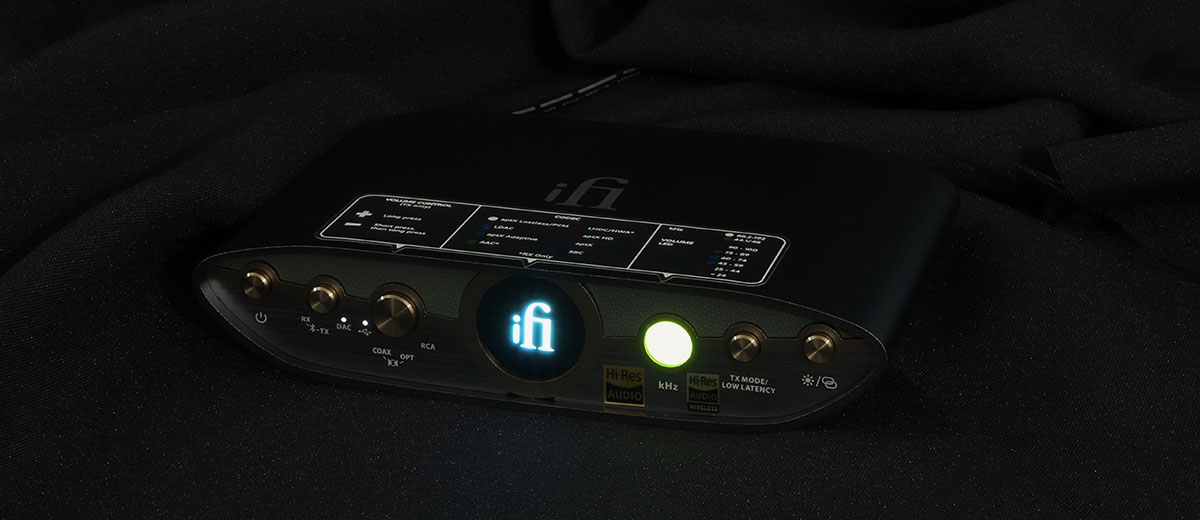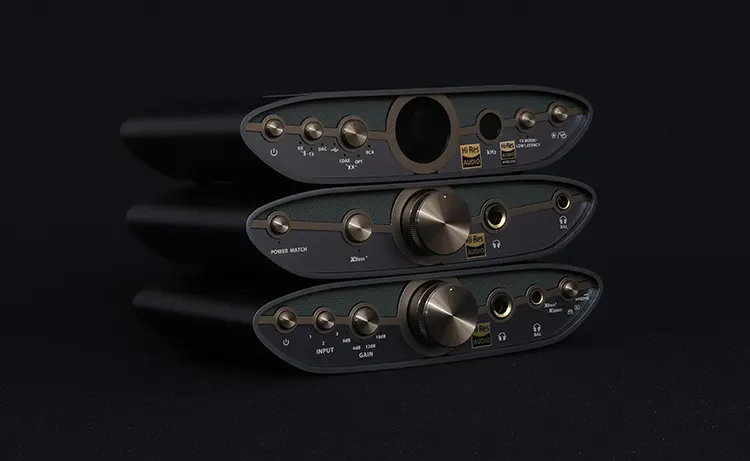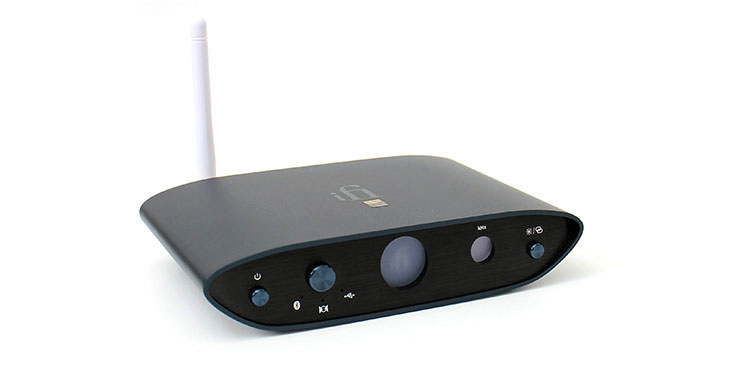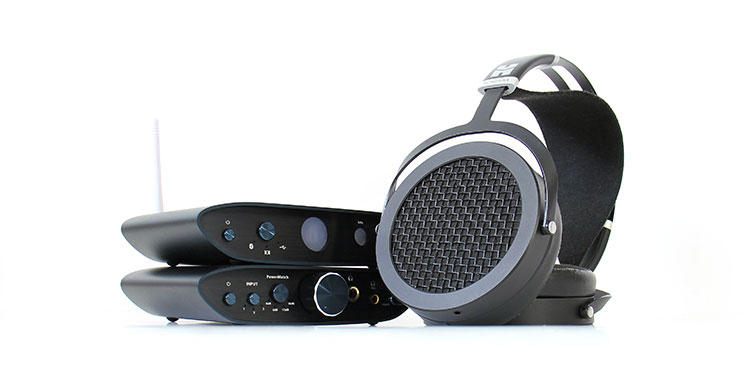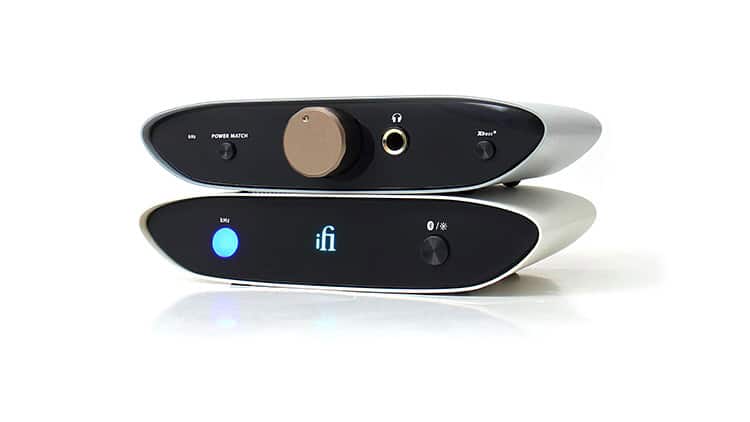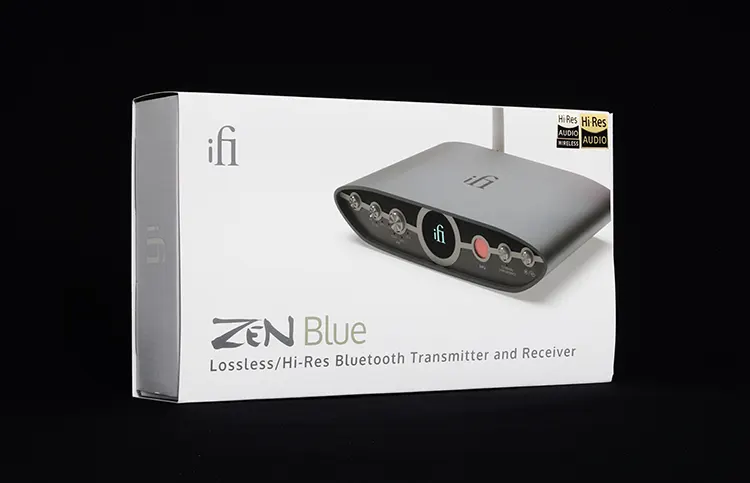Synergy
Bluetooth Pairing
The ZEN Blue 3 can either receive a signal from a Bluetooth-compatible source device (when in RX mode) or transmit a signal to a Bluetooth receiver (when in TX mode).
This will work for those who want to use their favorite TWS set around the house fed by the ZEN Blue 3, although you have to be in the line of sight of the unit for the signal to remain stable.
I did run into a small snafu and that was as I was pairing the ZEN Blue 3 with the Aurvana Ace 2. I could only connect them at the LDAC level and could not force them to work on aptX Lossless.
It could have been the Creative set and I will not put iFi to blame here but there’s no way of forcing a codec to work on this device.
I was able to pair up and store many devices and I believe it can store up to 10 devices. I just kept feeding it devices and they easily paired up and re-connected thereafter with no issue but I eventually ran out of devices. So I can’t say much more.
Power requirements
You can run the iFi audio ZEN Blue 3 with just the USB input cord but I do suggest using the included power brick which is as generic as they get.
Is there a performance gain if you use one of their iPower power bricks? My opinion is that it makes no difference in this case. I couldn’t notice a change in the noise floor either.
The stock power brick works fine on this model. I could tell a difference when you use the iPower brick on the ZEN CAN 3, and especially on the ZEN DAC 3, but not on this model.
Select Comparisons
iFi audio ZEN One Signature
Technical
The iFi audio ZEN ONE Signature has more similarities to the ZEN Blue 3 than the other two Blue models which I find curious. Both these models share similar IO, and both models give the user the ability to access the internal DAC section.
However, the ZEN ONE Signature is geared for audiophile use with Bluetooth capability and I feel that the ZEN Blue 3 is the opposite, it caters to Bluetooth quality, features, and stability over all else.
The ZEN ONE Signature has iFi’s custom Burr-Brown DAC with their in-house firmware and you could swap firmware on the unit with different flavors of digital filters but the ZEN Blue 3 only has firmware for the Bluetooth module.
Now, when it comes to Bluetooth transmission quality there’s no doubt that the Zen Blue 3 wins by offering features that the ZEN ONE Signature doesn’t have.
Like the volume control, the ability of RX and TX modes alongside aptX Lossless capability, future-proofing your investment.
Design
Both models have a round, backlit iFi badge that glows a particular color upfront depending on what digital format is being played.
Both models look elegant to me but aesthetically, the ZEN ONE would blend in with more iFi components compared to the ZEN Blue 3.
The win as far as features are concerned goes to the ZEN Blue 3. Both models wear iFi’s rounded trapezoid-shaped housing that is rugged and robust since it’s made from thick metal.
Since we’re talking about aesthetics here, I can nitpick and say that the Bluetooth antenna would look less inconspicuous, and more stealthy, if they were black on these units instead of white.
Performance
I have to admit, I prefer the ZEN ONE Signature sonically over the ZEN Blue 3 particularly when you’re tapped into the DAC section on both models.
Both DACs are rather neutral-sounding DACs but the Signature seems to be the warmer, more musical, and is the most technically capable of the two.
The staging, for example, is wider, more precise, and projects better placement precision on the ZEN ONE Signature over the ZEN Blue 3.
It’s a battle between the more familiar Burr-Brown DACs with custom firmware or an ES9023. The Burr-Brown wins hands down.
Vocals sound larger and fuller, and the overall tonality takes on a dynamic aspect because of the higher SNR and DNR ratings of the ZEN ONE Signature. It’s the more transparent sounding of the two as well.
The Bluetooth sections can only be compared on LDAC codec because of the lack of aptX Lossless codec on the ZEN ONE Signature.
The lack of aptX Lossless might put some off and it’s understood. The aptX Lossless is the superior codec and since it’s only available on the ZEN Blue 3, it makes it the more futureproof unit of the two.
iFi audio ZEN Air Blue
Technical
If all you’re after is a means to inject Bluetooth into an already existing system, try out the ZEN Air Blue. Particularly if you’re not willing to invest much.
Of course, the ZEN Air Blue doesn’t offer the amenities of the ZEN Blue 3, like balanced topology, or ample IO ports along with RX and TX capabilities. But you do get a pair of fixed analog RCA outputs that are universal in the audio industry.
Perhaps you have a small listening room with some speakers and want to feed LDAC-quality audio over to your main system or even to entertain others. The ZEN Air Blue will give you that but nothing else.
I had to do some guesswork and guessed correctly that the ZEN Air Blue uses a QCC5125 chip for Bluetooth since there was mention that the radio works under 5.1 specifications.
Design
The iFi audio ZEN Air Blue uses high-quality components and it even uses the same DAC which is the ESS ES9023. However, in this model, the DAC section is inaccessible via Physical I/O, technically it is accessed by the Bluetooth Connection.
The build quality of this is adequate but not as exceptionally good as the all-metal ZEN Blue 3 cabinet design offers.
The ZEN Air Blue does attempt to supply some design aspects of the ZEN Blue 3 and retains the backlit iFi logo upfront which displays a different color according to what codec is being used.
The front panel has a single Bluetooth pairing button and on the back panel, you will only find a set of analog RCA fixed outputs and a 5V DC jack to power up the unit. Simple is an understatement.
Performance
If you tap into each unit via their RCA analog outputs I would put my money on that you will not notice a difference at the LDAC codec level between these two devices.
They both offer the same natural tonality, and similar codec capability, excluding aptX Lossless, with similar specs. But the ZEN Air Blue can only receive a Bluetooth signal and that is its limitation.
You miss out on build quality, features, the TX mode, and the aptX Lossless capability but at the LDAC Bluetooth level, sonically you will not miss out on much.
My Verdict
The iFi audio ZEN Blue 3 seems to be aimed at buyers who want a way to inject the latest Bluetooth capability into an existing audio system and do so skillfully well, audibly speaking.
By today’s Bluetooth standards, It’s one of the best-sounding Bluetooth solutions around and the most future-proof.
Of course, Bluetooth has audio limitations and perhaps that’s why iFi decided not to splurge on a top-tier DAC within this model.
If they had done so, by either using their usual Burr-Brown setup or by using a higher-tier ESS chip like the 9069 or even a 43198, my opinion would change from great to stellar.
I would have placed this model on a higher pedestal and would wholeheartedly recommend the ZEN Blue 3 to any Audiophile as a center hub, especially if the DAC was better.
For now, I would just consider it one of the best and most up-to-date Bluetooth home audio solutions around.
iFi audio ZEN Blue 3 Technical Specifications
- Bluetooth chipset: Qualcomm QCC5181
- DSP chipset: Comtrue CT5302
- DAC: ES9023
- Amp: MAX97220
- Inputs RX mode: Bluetooth 5.4; aptX lossless, aptX, Adaptive aptX, aptX, LDAC, LHDC/HWA, AAC, SBC
- Inputs TX mode: USB, Optical, Coaxial, RCA L/R analog
- DAC mode inputs: USB, Optical, Coaxial, RCA L/R analog
- Outputs RX mode: Optical, Coaxial, RCA L/R analog, Balanced 4.4mm
- Outputs TX mode: Bluetooth 5.4; aptX Lossless, aptX, Adaptive aptX, aptX, LDAC, LHDC/HWA, AAC, SBC
- DAC mode outputs: Optical, Coaxial, RCA L/R analog, Balanced 4.4mm
- Maximum supported rate samples: RX mode, TX mode 96kHz/24bit
- Maximum supported rate samples: DAC mode, 96kHz24bit (USB), 192kHz/24bit (Optical, Coaxial)
- Output voltage: Balanced 4.4mm 4.1Vrms(0DBFS@1kHz) Single-Ended 2.05Vrms(0DBFS@1kHz)
- Output Impedance: Balanced 4.4mm ≤102Ω, Single-Ended ≤51Ω
- SNR: 109 dB
- DNR: 109 dB
- THD+N: 0.005% (10k load @20-20kHz)
- Power supply requirements: USB-C or DC 5V ≥5A Center +ve
- Power consumption: ≤1W
- Dimensions: 158x115x35mm (6.2”x4.5”x1.4”)
- Net weight: 447g (0.99lbs)

